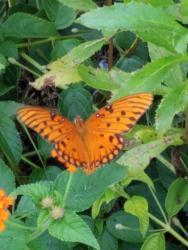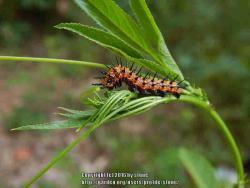Try this tool:
http://www.xerces.org/milkweed...
That applies for everyone, by the way. But when I searched Ohio a source came up that sells the three different milkweeds listed along with a "Milkweed Madness" packet that has even more species and can cover 100 square feet. Just type "milkweed" in the product search box:
http://www.ohioprairienursery....
I've purchased from Everwilde Farms before and what I like is that each product page has a map where it shows the status of what you're buying: native to state, native to county, introduced, noxious, etc. So you won't waste your time growing things that won't work in your area. It gives pretty good details on the plants themselves. About half of the milkweeds native to Florida grow in swamps or wetlands, so I can't imagine they'd like my yard.
http://www.everwilde.com/
And of course, Monarch Watch is a great resource for all things Monarch. And they have a link to ALL the maps for ALL the Milkweed species across the US - study this, there will be a quiz!
 http://www.bonap.net/NAPA/Taxo...
http://www.bonap.net/NAPA/Taxo...
Now, Monarch Watch splits the country into ecoregions for the purposes of distributing milkweed seeds and plugs. And for collecting those seeds. Ohio is in two ecoregions (221 and 222). Here's what they say about those regions and what the Monarchs want to eat:
"Midwest and Northeast
The Midwest and Northeast regions extend from the east coast north of the 36th parallel, and westward beyond the 100th meridian. These two regions are combined since they share the same milkweed species although the need for seeds and plugs varies by ecoregion. These regions represent the main summer breeding areas for monarchs in the eastern United States. The main monarch host plant is Asclepias syriaca (common milkweed). Other species used by monarchs, in order of their abundance and preference, are A. incarnata (swamp milkweed), A. tuberosa (butterflyweed), A. verticillata (whorled milkweed), and A. exaltata (poke milkweed).
Midwest Ecoregions include: 212, 222, and 251
Northeast Ecoregions include: 212 (east of Lake Huron), M212, 221 & M221"
And here's a link to the Monarch Watch milkweed market:
http://monarchwatch.org/milkwe... I don't know about the rest of the country, but fall sowing is best in Florida! Heck, planting in fall is best in Florida. Otherwise, you just cook your plants.



